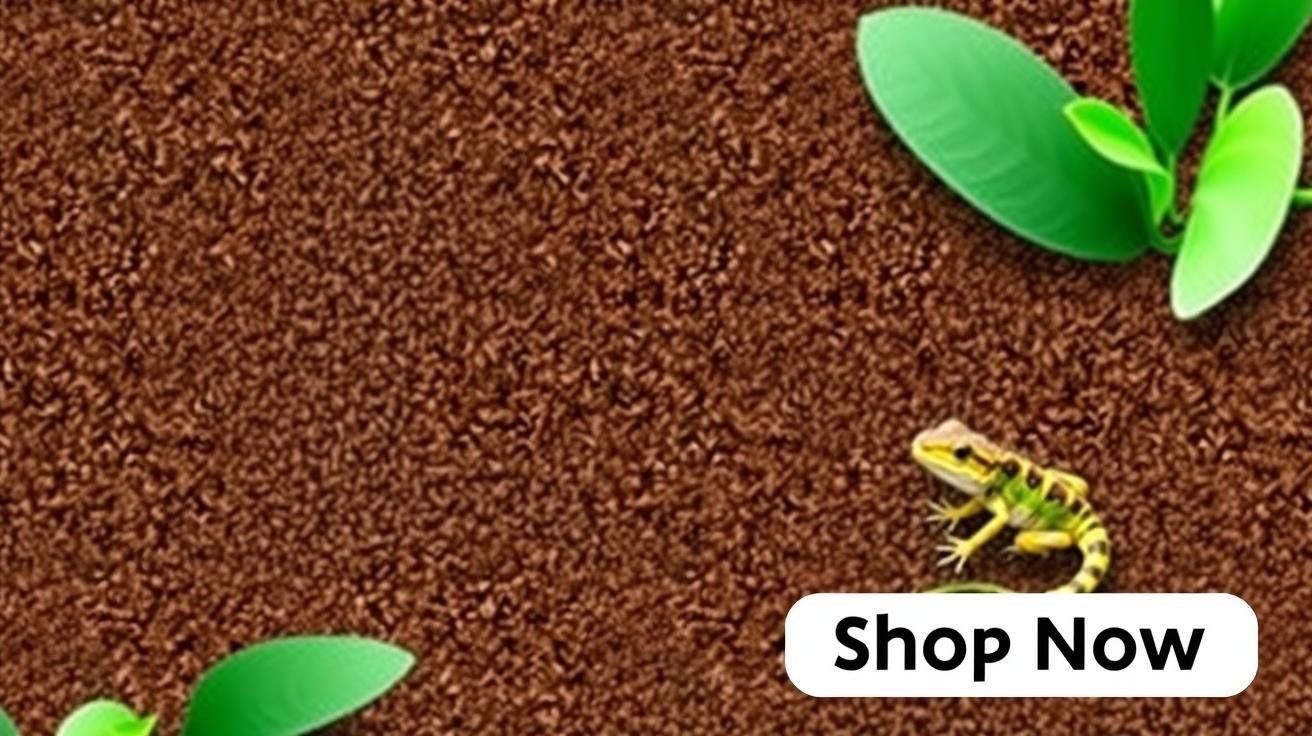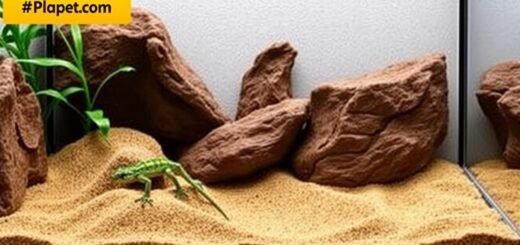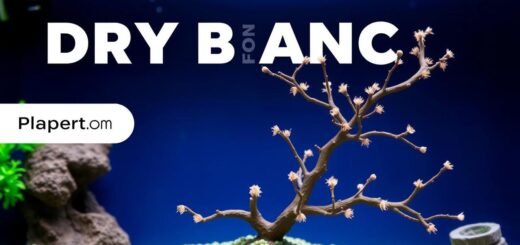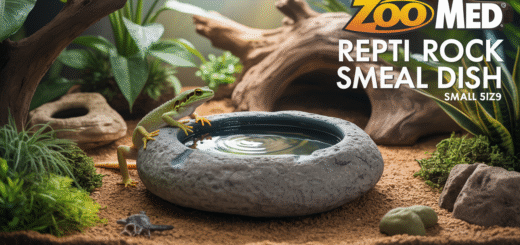Zilla Terrarium Liner Review: Safe & Simple Substrate?

Zilla Reptile Terrarium Liner Review: The Safe and Simple Substrate?
Welcome, fellow reptile and amphibian enthusiasts! Today, we’re diving deep into one of the most fundamental—and fiercely debated—topics in reptile husbandry: substrate. Choosing what to line the bottom of your terrarium with is more than just an aesthetic decision; it directly impacts your pet’s health, safety, and well-being. From the risks of impaction with loose substrates to the sterile look of paper towels, the options can be overwhelming. Is there a happy medium? That’s the question we’re tackling as we review a popular choice for keepers who prioritize simplicity and safety: the Zilla Reptile Terrarium Bedding Substrate Liner.
This product promises a low-maintenance, non-abrasive, and natural-looking surface for your scaly or slimy friends. But does it live up to the hype? As a long-time keeper and professional product reviewer, I’ve seen my fair share of substrates come and go. I’ve put this liner through its paces to see if it’s truly essential gear for your setup or just another passing trend. Let’s find out if this is the right choice for your bearded dragon, leopard gecko, or other cherished pet.
Key Takeaways: The 30-Second Summary
Pressed for time? Here’s the bottom line on the Zilla Terrarium Liner:
- Top-Tier Safety: Its primary benefit is the near-elimination of impaction risk, making it an excellent choice for species like juvenile bearded dragons and leopard geckos.
- Incredibly Easy Maintenance: Cleaning is a breeze. Spot-clean daily and deep-clean with just cold water weekly. This drastically simplifies habitat hygiene compared to loose substrates.
- Great for Specific Use Cases: It’s an ideal substrate for new reptile owners, quarantine tanks, or any keeper who prioritizes health and simplicity over naturalistic burrowing behaviors.
- Doesn’t Support Natural Behaviors: The biggest drawback is that it prevents digging and burrowing, which can be an important form of enrichment for many species.
- Sized for Convenience: This particular model is perfectly cut for standard 40-gallon breeder and 50-gallon tanks, which are extremely common sizes. No scissors required.
- LOW-MAINTENANCE AND EASY TO CLEAN, perfect for beginner pet owners. Simply rinse with cold water to clean and reuse.
- ODOR-REDUCING TERRARIUM LINER. Treated with an enzyme that minimizes reptile odors and contributes to a fresh and health…
- DESIGNED TO BE SAFE so that your reptile cannot accidentally ingest the bedding when feeding. An alternative to loose su…
Reviewer’s Verdict: A Solid Foundation for Safety-Conscious Keepers
After several weeks of use in one of my leopard gecko enclosures, my overall impression of the Zilla Reptile Terrarium Liner is very positive, albeit with a few important caveats. To be blunt, this isn’t the substrate for keepers aiming for a 100% bioactive, naturalistic setup. That’s not its purpose. Instead, this liner is a champion of practicality. It excels in providing a safe, hygienic, and incredibly low-maintenance environment. For new owners nervous about the dangers of loose substrate, or for seasoned keepers setting up a temporary quarantine tank, this product is an absolute game-changer. It delivers peace of mind, and in the world of reptile care, that’s worth its weight in gold.
Essential Features & Benefits: A Deeper Look
Let’s break down what Zilla offers and why these features matter for your pet’s daily life.
Low-Maintenance and Easy to Clean
This is arguably the liner’s biggest selling point. Traditional substrates like sand or soil mixes require complete replacement every few months, a process that is both messy and costly. With the Zilla liner, daily spot-cleaning involves simply lifting out waste. For a deep clean, you just remove the liner, rinse it thoroughly with cold tap water (avoiding soaps or detergents), and let it air dry. I recommend having two on hand so you can swap in a clean one immediately. This ease of cleaning makes maintaining a sterile environment significantly more manageable, reducing the risk of harmful bacteria buildup.
Absorbent & Non-Abrasive Material
The material feels a bit like a dense felt. It’s soft to the touch, which is crucial. Reptiles, especially those with sensitive skin or delicate toe pads like geckos, can suffer from irritation or injury on rough surfaces. The Zilla liner provides a smooth, non-abrasive surface that’s gentle on their feet and bellies. The absorbency is also a key feature; it helps wick away moisture from spilled water or waste, keeping the surface relatively dry and preventing your reptile from sitting in puddles. This is a must-have for reptiles and amphibians that need a clean, dry surface.
Safety First: No Impaction Risk
Impaction—a fatal blockage of the digestive tract caused by ingesting substrate—is a major fear for many reptile owners, especially those with voracious eaters like bearded dragons. Because this liner is a solid piece of material, there is zero risk of your pet accidentally swallowing it during feeding time. This feature alone makes it a superior choice over sand, crushed walnut shells, or other particulate substrates, particularly for juvenile animals still learning how to strike their prey accurately.
Naturalistic Brown Aesthetic
While it won’t fool anyone into thinking it’s real dirt, the earthy brown color is a significant step up from the clinical look of paper towels or newspaper. It helps create a more natural and visually appealing habitat, allowing your reptile’s colors to pop. It provides a nice, neutral backdrop that blends well with other terrarium decor like rocks, hides, and driftwood.
What We Liked vs. What Could Be Better
Pros / Highlights
- Unmatched Safety: Completely eliminates the risk of substrate impaction.
- Effortless Cleaning: Simplifies habitat hygiene, saving time and effort.
- Cost-Effective: Reusable for months or even years, saving money over disposable substrates.
- Gentle on Reptiles: The soft, non-abrasive surface protects sensitive feet and scales.
- Perfect Fit for Common Tanks: Designed specifically for 40-breeder/50-gallon tanks, meaning no cutting or trimming.
Potential Drawbacks / Cons
- Inhibits Natural Behavior: Reptiles that love to dig or burrow (like sand boas or some skinks) will be unable to express this instinct.
- Claw Snagging Potential: Although uncommon, some keepers report that their lizards’ claws can occasionally get snagged in the fibrous material. Regular nail trims can mitigate this.
- Requires Diligent Cleaning: While easy to clean, it’s not ‘no-clean’. If neglected, the absorbent material can become a breeding ground for bacteria.
- Can be Difficult to Secure: Without anything weighing it down, the edges can sometimes curl up, allowing insects or waste to get underneath.
Setup and Cleaning: A Real-World Walkthrough
So, how does it actually perform day-to-day? Here’s my experience. When you first unbox the liner, it will be rolled up. I recommend laying it flat on the floor with a few books on the corners for an hour or so to get it perfectly flat. Once flattened, it slides right into the bottom of a standard 40-gallon breeder tank with almost no gap around the edges—a really satisfying fit.
Daily life with the liner is simple. I use a pair of feeding tongs to pick up any urates or feces. Done. Once a week, I perform the full swap. I move my gecko to a temporary holding container, lift out the dirty liner, and place the pre-cleaned spare one in. The dirty one goes into the bathtub, where I spray it down with a detachable shower head using cool water. One thing I noticed is that you really need to rinse it thoroughly to get everything out of the fibers. Then, I hang it over the shower rod to air dry completely before it’s ready for the next rotation. The whole process takes maybe 15 minutes, a far cry from the hour-long substrate-scooping ordeals of the past.
Frequently Asked Questions
-
1. How often do I really need to clean the Zilla liner?
-
You should spot-clean for waste daily. A full wash and rinse should be done at least once a week, or more often if you have a particularly messy reptile. To prevent bacteria from building up, it’s crucial to stay on top of this schedule.
-
2. Can this liner be used in a high-humidity setup?
-
While it’s absorbent, it’s not ideal for constantly damp or tropical environments. The material can hold moisture for a long time, which might foster mold or bacterial growth if not dried out properly between mistings. For arid or semi-arid setups, it works perfectly. For a tropical tank, you might be better off with a substrate like cypress mulch or coco fiber that handles high humidity better.
-
3. Does the liner retain odors over time?
-
If cleaned regularly and properly with cold water, it does a surprisingly good job of not holding onto smells. However, if cleaning is neglected, or if you use hot water (which can ‘bake’ in organic odors), it may start to smell. My advice: stick to the cold water rinsing instructions and ensure it dries completely.
-
4. My tank isn’t a standard 40-breeder. Can I cut the liner?
-
Yes, you can. The material can be cut with a sharp pair of heavy-duty scissors or a utility knife. Just be aware that cutting it may cause the edges to fray a bit more than the factory-finished edges. It’s best to measure twice and cut once for a snug fit.
The Final Verdict: A Must-Have for a Certain Type of Keeper
So, where do we land on the Zilla Reptile Terrarium Bedding Substrate Liner? In my professional opinion, this isn’t just a pet supply; it’s a tool for responsible pet ownership. It brilliantly solves the problem of substrate safety and hygiene. It might not offer the enrichment of a deep, diggable substrate, but it provides a foundation of health and cleanliness that is, frankly, more important for many captive reptiles.
I wholeheartedly recommend this liner to new reptile owners who are learning the ropes, for any quarantine or medical observation tank, and for keepers of animals like leopard geckos, bearded dragons, and corn snakes where impaction is a primary concern. It’s a safe, durable, and practical piece of essential gear. For those looking to build a complex bioactive world, this isn’t your product. But for the vast majority of keepers who want a healthy pet and a clean home, the Zilla liner is an outstanding choice that you can rely on.




